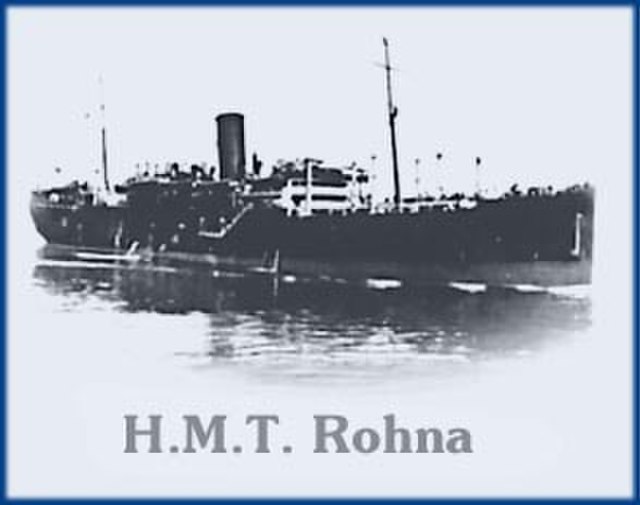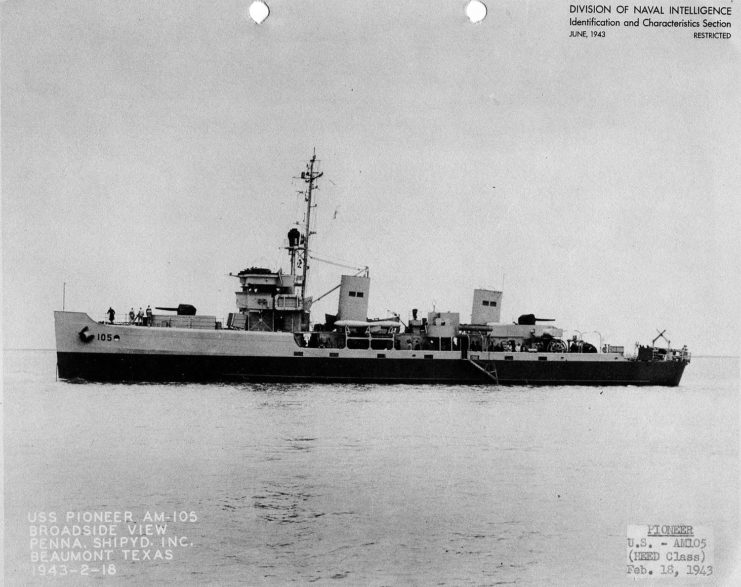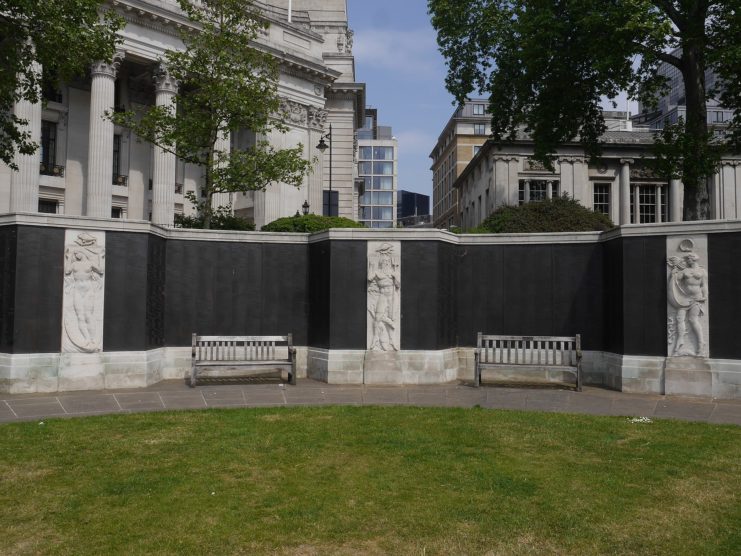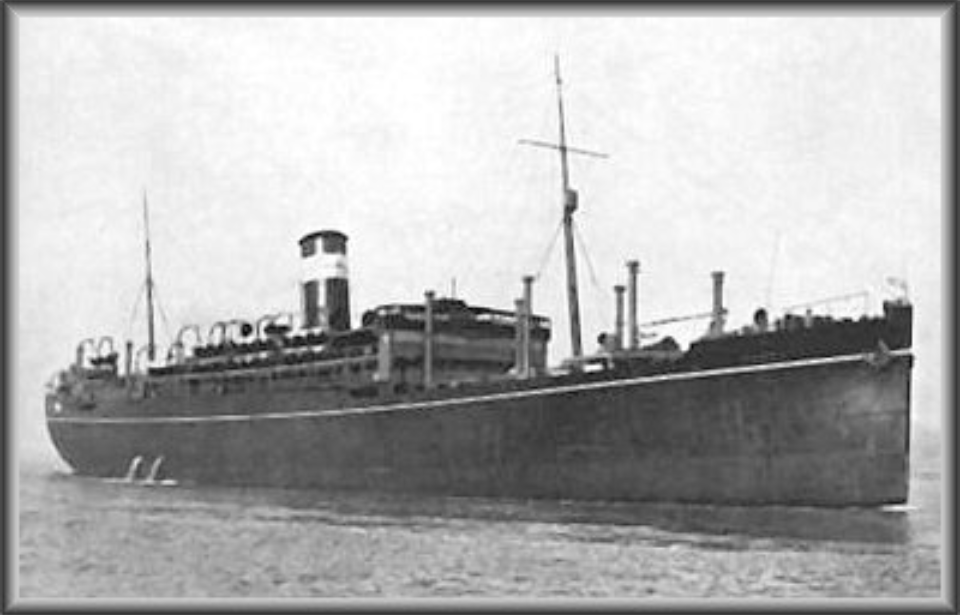On December 7, 1941, the Japanese attack on Pearl Harbor claimed the lives of 1,177 sailors and crew aboard the USS Arizona (BB-39). Though this devastating loss severely impacted the U.S. Navy, it’s important to note that the battleship was docked at Ford Island and not actively engaged in combat when it was struck.
Surprisingly, the deadliest loss of American lives at sea during World War II occurred not in the Pacific, but in the Mediterranean. There, the German Luftwaffe sank the HMT Rohna, a British India Steam Navigation Company transport ship, resulting in a far higher toll of American casualties at sea. The sinking of the Rohna, with over 1,000 American soldiers on board, remains one of the most tragic and lesser-known maritime disasters of the war.
Construction of the HMT Rohna

The HMT Rohna was built in 1925 after the British India Steam Navigation Company ordered two new ships for the Madras-Nagapatam-Singapore route. The ship was constructed by Hawthorn Leslie and Company at their Hebburn shipyard on the River Tyne. It was launched in August 1926 and finished a few months later.
The Rohna was originally designed as a passenger ship and could carry up to 5,064 people on deck. However, new regulations reduced that total to just 3,851. Even with this reduction, it was still the largest passenger ship registered in the United Kingdom. Because of its size, it was no surprise that the Rohna was taken for military use as a troop transport during the Second World War.
Service during the early days of World War II

The HMT Rohna was sailing the Indian Ocean when the UK entered World War II. Largely operating unescorted and occasionally traveling as part of convoys, she ferried thousands of troops to different areas, including through the Suez Canal and between Bombay, Marseille, Durban, Mombasa and Dar es Salaam.
Rohna was involved in several important campaigns early on in the Second World War. She ferried troops throughout the North African Campaign, as well as during the invasion of Sicily, which ended in an Allied victory and resulted in the collapse of Italian Prime Minister Benito Mussolini‘s regime. Lastly, the vessel ferried troops during the Allied invasion of Italy.
The HMT Rohna transported a number of American soldiers

In November 1943, the HMT Rohna set sail carrying 1,981 American soldiers bound for India. The ship’s crew mainly consisted of Indian sailors, while British and Australian officers oversaw operations.
The soldiers on board came from various units, including the 853rd Engineer Battalion, Aviation; the 322nd Fighter Control Squadron; the 31st Signal Construction Battalion; and the 44th Portable Surgical Hospital Unit. Their mission was to construct bases in India to support Boeing B-29 Superfortress bomber operations.
To help defend the ship against potential enemy attacks, 18 of these soldiers were assigned to operate the Rohna‘s Oerlikon autocannons and a QF 12-pounder naval gun.
Sinking of the HMT Rohna

On the morning of November 25, 1943, the HMT Rohna and four other troop ships departed Oran, in French Algeria. The next day, the convoy came under siege by a group of Heinkel He 177A Greifs, Junkers Ju 88s and torpedo bombers. While the convoy was defended by Free French Air Force Supermarine Spitfires, there were only four up against over 20 Luftwaffe-flown aircraft.
The He 177As were armed with Henschel Hs 293 radio-guided glide bombs, which they dropped on the ships below. The majority were unsuccessful in hitting their targets, as the way they were released made it difficult to accurately hit. The convoy fought back with their anti-aircraft guns.
Around an hour in, Rohna was struck by a bomb on her port side, becoming the only casualty of the skirmish. Many onboard were injured or killed, while several escaped and boarded lifeboats. In total, 1,138 were killed, of which 1,015 were American, and 782 reached the lifeboats. They were later rescued by the cargo ship Clan Campbell and the Auk-class minesweeper USS Pioneer (AM-105), who themselves were protected by the Hunt-class destroyer HMS Atherstone (L05).
Legacy of the sinking

In addition to the 1,015 U.S. personnel who perished during the HMT Rohna sinking, another 35 died from their injuries later, making the incident the deadliest loss of American life at sea from enemy action during World War II. However, the U.S. government remained tight-lipped about the tragedy. In January 1944, families of the missing received telegrams informing them their loved ones were unaccounted for, and months later, they were notified that the missing soldiers had been killed.
In February 1944, the press was informed that an incident had caused the deaths of over 1,000 American soldiers, but both the casualty total and the ship’s identity were kept secret until June 1945. While officials admitted that German bombers had sunk the Rohna, they withheld details about the use of radio-guided glide bombs until the Freedom of Information Act passed in 1967.
Why the secrecy? U.S. officials were keen to prevent the Germans from knowing that their advanced glide bombs had been effective. Since the sinking, memorials have been erected in various locations—such as London, the Bronx (New York City), Seale (Alabama), Chittagong (Bangladesh), and Mumbai (India)—to honor the men who lost their lives.
